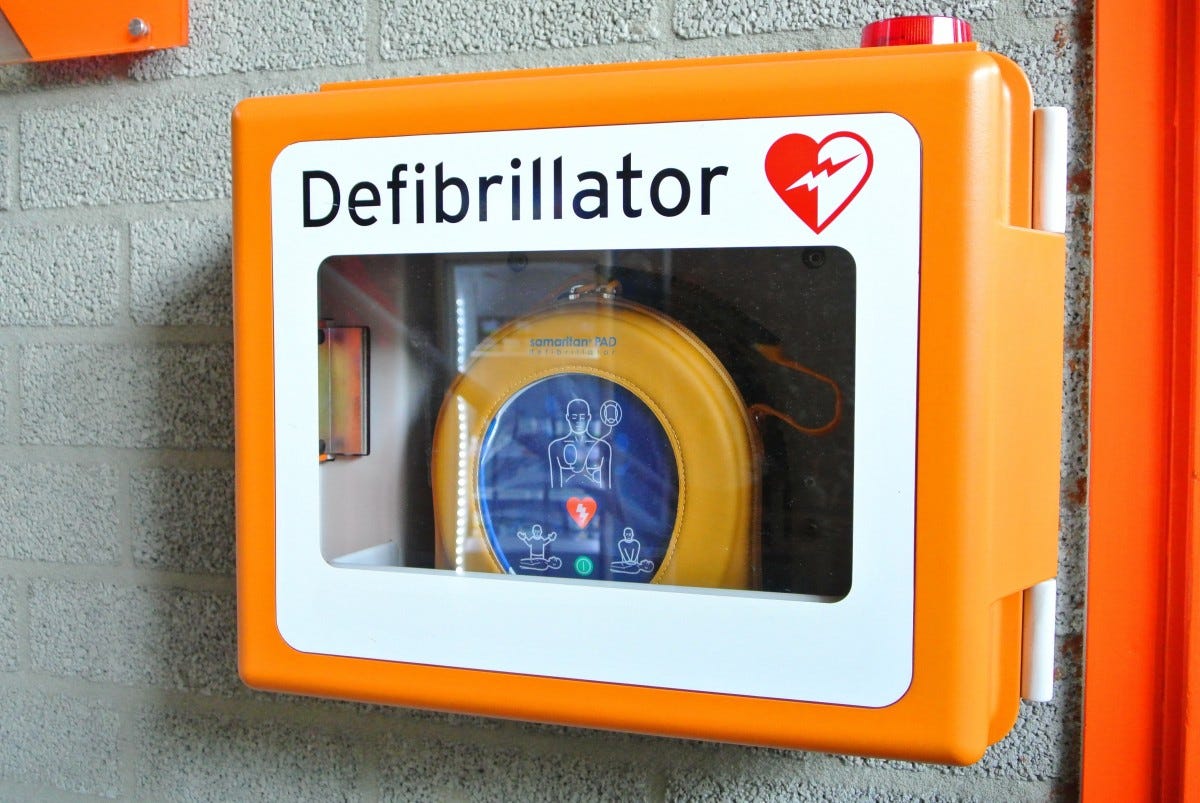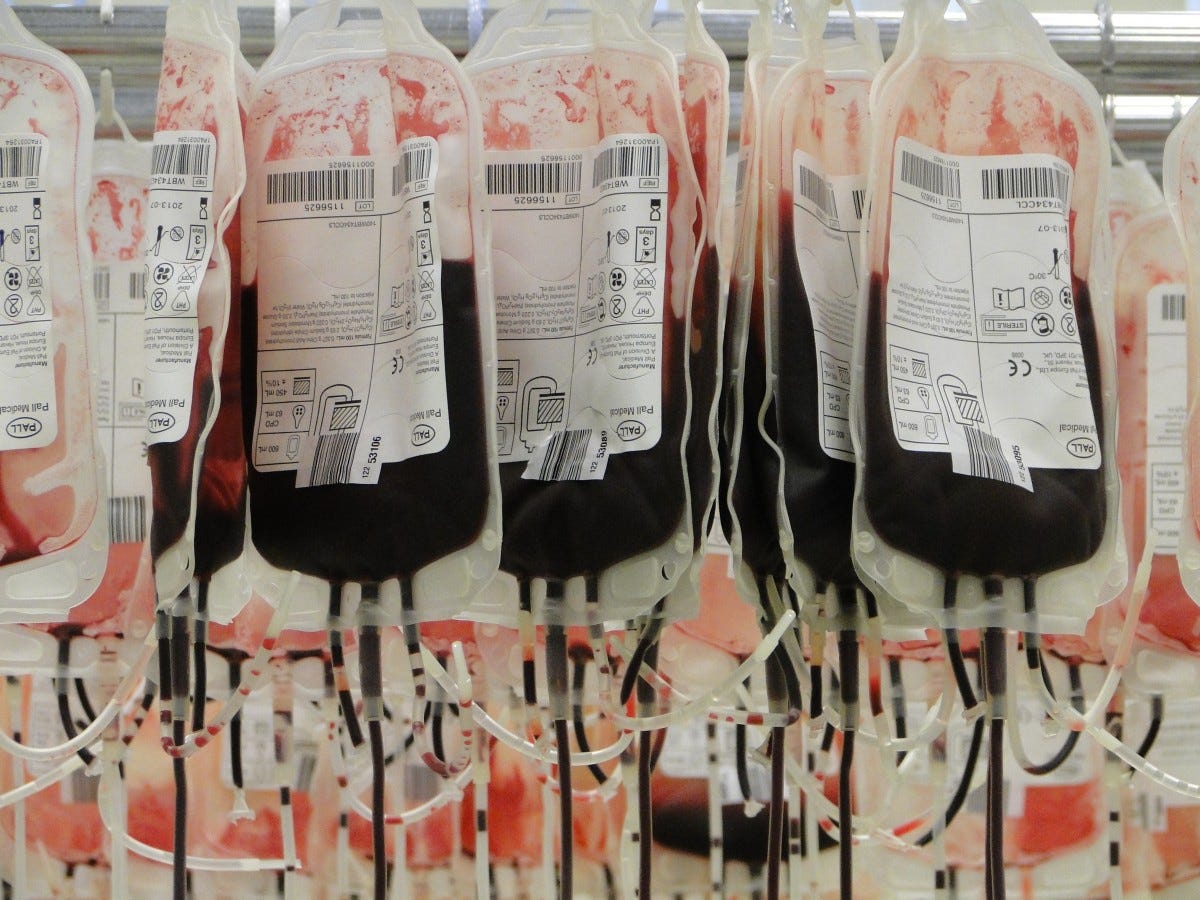Sci-Ed Update 327
New blood group system, dropping remedial courses, aging protein, are nociceptors male or female?, children getting more nearsighted, new way to place defib pads, predictions(!), and more.
What Higher Ed Will Look Like in 10 Years
Higher education in the United States has reached a crossroads. Colleges buffeted by economic changes, political pressures, and dwindling public confidence must respond quickly while also playing the long game: They must plan now for future demographic shifts, rapid technological change, and an uncertain labor market. How will their decisions shape not only their own institutions but the entire higher-education ecosystem? What will it look like in 10 years?
The Chronicle’s recent report, Higher Education in 2035, explores how colleges can prepare for the challenges to come in the decade ahead. This free report excerpts insights from the full report.
Read more→ AandP.info/yi3
Pulse of Progress: Looking Back, Moving Forward
If you’re like me, you’re behind in your podcast listening. Even if you’re not, you probably don’t remember what you have listened to all that well. We know the solution to that! Reviewing that previous content! This one is an example of the most popular and controversial episode type—the one that kicks off every one of the seven seasons of The A&P Professor podcast…the PREDICTION episode!
In Episode 147, host Kevin Patton reviews the highlights and events of the previous year in the world of The A&P Professor. He then turns to last year’s predictions for teaching human anatomy and physiology to see if he was on the right track. Finally, predictions for the coming year are revealed. And lots of other stuff—this episode is two hours long, after all!
0:00:00 | Introduction
0:00:50 | Debrief: Topics, Stats, Reflections
0:21:28 | A Long, Long, Long Episode
0:23:05 | Debrief: More Reviewing & Reflecting
0:38:59 | Did I Get My Predictions Right?
0:50:22 | Textbook & Academic Authors Association
0:57:47 | Looking Ahead with New (Old) Predictions
1:10:49 | Brain Break
1:12:58 | A Couple More Predictions
1:24:50 | What’s on TAPP?
1:26:20 | More New Predictions
1:44:47 | Let’s Share
1:45:41 | Even More New Predictions
1:58:20 | Staying Connected
To listen to this episode, click on the play button above ⏵ (if present) or this link→ https://theAPprofessor.org/podcast-episode-147.html
New defib placement more than doubles odds of surviving cardiac arrest
Placing defibrillator pads on the chest and back, rather than the usual method of putting two on the chest, increases the odds of surviving an out-of-hospital cardiac arrest by more than two-and-a-half times, according to a new study.
Sadly, the odds of surviving an out-of-hospital cardiac arrest (OHCA) are low. While circulation is returned in 30% of cases, only 10% survive. However, when a cardiac arrest is due to ‘shockable’ heart arrhythmias, those odds are improved by rapid defibrillation – applying electrode pads to the chest to deliver an electric jolt to shock the heart back into normal rhythm.
Read more→ AandP.info/i4g
1 in 3 children worldwide is now nearsighted, study shows
More than a third of children around the world were nearsighted in 2023, and this proportion will rise to almost 40% in 2050, according to new research.
Nearsightedness, or myopia, refers to when closer objects are clear, but distant objects are blurry. There has been a significant rise in the prevalence of myopia among children and adolescents in the past 30 years – from 24% in 1990 to almost 36% in 2023 – according to the paper, published in the British Journal of Ophthalmology on Tuesday.
Researchers from Sun Yat-sen University in Guangzhou, China, reached their findings by analyzing the results of 276 studies involving more than 5.4 million children and adolescents in 50 countries across all six continents.
Read more→ AandP.info/kf1
How Many Calories Do You Burn Walking 10,000 Steps?
IN THE AGE of wearables, fitness is no longer about going for a run on a nice day or scheduling a walk around the neighbourhood with a friend for the sake of movement. These feats are now all about hitting 10,000 steps a day.
Even if you aren’t a slave to a fitness tracker, the concept of walking 10,000 steps a day is ingrained as a general health goal for tons of Americans.
'The idea of walking 10,000 steps daily actually came from a 1960s Japanese marketing campaign for a device called the 10,000-steps metre,' shares Kim Yawitz, R.D. 'The number 10,000 had no medical significance at the time – they only chose it because the Japanese character for 10,000 resembles a person walking [which made for a nice logo].'
Even today, there's no medical consensus on how many steps you should aim to hit each day. The number you need varies by age and other factors…
We asked dietitians how many calories you really burn by walking 10,000 steps. The short answer: It’s different for everyone.
Read more→ AandP.info/90w
Nociceptors are functionally male or female: from mouse to monkey to man
The prevalence of many pain conditions often differs between sexes. In addition to such quantitative distinctions, sexual dimorphism may also be qualitative reflecting differences in mechanisms that promote pain in men and women. A major factor that influences the likelihood of pain perception is the threshold for activation of nociceptors. Peripheral nociceptor sensitization has been demonstrated to be clinically relevant in many pain conditions. Whether peripheral nociceptor sensitization can occur in a sexually dimorphic fashion, however, has not been extensively studied…
[The] data reveal a functional double dissociation of nociceptor sensitization by sex, which is conserved across species and is likely directly relevant to human pain conditions. To our knowledge, this is the first demonstration of functional sexual dimorphism in human sensory neurones.
Kevin Patton comment→ This could be a game-changer in the field of pain management. Or it could be yet another path (mis)leading us to tragic (mis)applications in healthcare.
Read more→ AandP.info/4dn
A decade of data in one state shows an unexpected result when colleges drop remedial courses
“The evidence is showing that these reforms are not increasing graduation rates,” said Alex Goudas, a higher education researcher and a community college professor at Delta College in Michigan, who was not involved in this study. “Some students are benefiting a little bit – only temporarily – and other students are harmed permanently.”
Kevin Patton comment→ And yet, we’ll continue implement huge, disruptive (in the bad sense) changes before we have any evidence they’ll do what we want them to do for us.
Read more→ AandP.info/yy8
Blocking One Protein Extends Lifespan in Mice by Up to 25%, Study Shows
A protein called interleukin 11 (IL-11) appears to play a crucial role in aging, with scientists extending the lifespans of mice by up to 25 percent simply by blocking the molecule's effects.
Led by researchers from the Duke-National University of Singapore (NUS) Medical School, the team behind the study used genetic engineering to turn off IL-11 production in a sample of mice, while injecting other mice with an anti-IL-11 drug.
Deaths from cancer and tumorous growths were reduced in both groups, while health conditions related to the effects of aging – including chronic inflammation and poor metabolism – were also less common.
Kevin Patton comment→ I’m thinking that this story might engage A&P students a bit more when we introduce the concept of interleukins to them.
Read more→ AandP.info/8kf
Scientists Identify New Blood Group After a 50 Year Mystery
When a pregnant woman had her blood sampled back in 1972, doctors discovered it was mysteriously missing a surface molecule found on all other known red blood cells at the time.
After 50 years, this strange molecular absence finally led researchers from the UK and Israel to describe a new blood group system in humans.
"It represents a huge achievement, and the culmination of a long team effort, to finally establish this new blood group system and be able to offer the best care to rare, but important, patients," UK National Health Service hematologist Louise Tilley says, after nearly 20 years of personally researching this bloody quirk.
Kevin Patton comment→ Keep in mind that we’ve discovered new blood group systems before. This is another one.
Read more→ AandP.info/mnn










